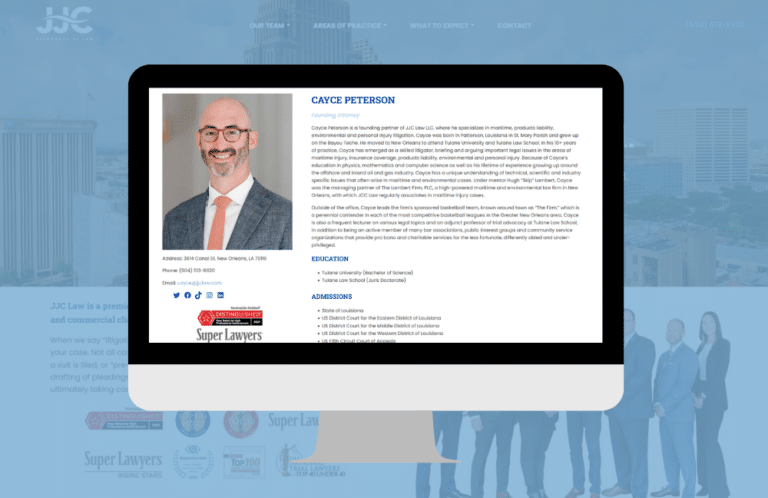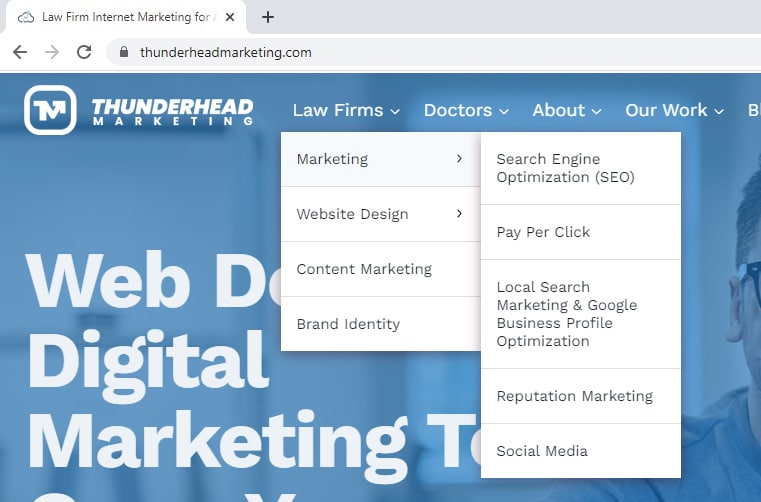For professionals like lawyers and doctors whose careers are built on trust and expertise, reputation is the foundation of their practice. Online reviews have become a pivotal part of this equation. A positive testimonial can bolster one’s practice, while a negative or, worse, a fake review can cast unwarranted doubts. Addressing these reviews, especially the inauthentic ones, becomes paramount not just for business growth, but also for upholding the integrity of the profession. This guide will show you how to remove fake reviews on Google when possible and what you can do to mitigate damage when it isn’t.
Understanding the Impact of Reviews in Legal and Medical Fields
Genuine testimonials are invaluable in professions like law and medicine. Both lawyers and doctors operate in spheres where their clientele or patient base heavily relies on word-of-mouth and shared experiences to make informed decisions.
For Lawyers:
Legal matters are inherently personal and often sensitive. Before entrusting someone with their legal concerns, potential clients want assurance. A lawyer with positive reviews is perceived as more competent, trustworthy, and successful in litigation or negotiation. However, a fake negative review can raise doubts, making a client hesitant, even if the lawyer’s track record is excellent.
For Doctors:
The patient-doctor relationship is built on trust. Patients are not just looking for expertise but also empathy, understanding, and clear communication. Reviews can provide insights into these soft skills that aren’t always evident from a doctor’s qualifications. A fake negative review can deter potential patients, questioning the doctor’s capability or bedside manner without cause.
Furthermore, in both fields, reviews play a role beyond just attracting new clients or patients. They influence peer perceptions, referral rates, and even potential partnerships or job opportunities. In the legal field, a lawyer’s online reputation might affect their standing in the local legal community. In medicine, it might influence collaborations or affiliations with medical institutions or research opportunities.
How to Spot a Fake Review
When considering how to remove fake reviews on Google, the first step is being able to spot them. Here are a few tips:
- Identifying Telltale Signs: Fake reviews often have distinct markers. They might be overly generic, lacking specific details about the service or interaction. Or they might be excessively detailed, weaving an intricate story that feels scripted rather than genuine. The language used can be a giveaway, too; inauthentic reviews might use formal or unnatural language, or sound more like marketing speak than a genuine client or patient feedback.
- Review Patterns: Patterns can emerge in fake reviews. Multiple reviews might be posted in quick succession, or several might share similar phrasing. For lawyers, watch out for reviews that don’t match the types of cases you handle. For doctors, be wary of feedback that mentions procedures or treatments not offered in your practice.
- The Reviewer’s Profile: A quick glance at the reviewer’s profile can offer insights. If they’ve left multiple reviews for different lawyers or doctors in various locations in a short span, it’s a red flag. Additionally, profiles with no image, a generic name, or no other activity can be indicators of a fake account.
- The Motivations Behind Fake Reviews: Understanding the ‘why’ can be as crucial as the ‘what’. Competitors might post negative reviews to tarnish a rival’s reputation. Conversely, overly glowing reviews might be purchased or posted by those with a vested interest. For professionals in high-stakes fields like law and medicine, even personal vendettas can translate into fake reviews. Disgruntled former employees are also a common source of fake reviews.
- Emotional Extremes: Fake reviews often swing to emotional extremes. They might be excessively praising or overly critical, using strong emotional language to sway readers. Genuine feedback, even if negative, tends to be more balanced, highlighting both pros and cons.
Recognizing fake reviews is an art built on observation and understanding. For lawyers and doctors, it’s an essential skill, ensuring that their online reputation is a true reflection of their dedication and expertise.
Google’s Policies on Reviews: A Brief Overview
Given Google’s prominence in online reviews, it significantly influences a professional’s reputation. For lawyers and doctors aiming to understand how to remove fake reviews on Google, grasping Google’s stance and policies on reviews becomes paramount.
Authenticity and Honesty:
Google values the authenticity of reviews. They expect all reviews on their platform to represent genuine user experiences. Reviews that are suspected to be fake, especially those that might be purchased or written with a conflict of interest, violate Google’s policies.
Prohibited and Restricted Content:
Google’s review policies explicitly state that content that’s sexually explicit, offensive, or promotes hatred or violence is not allowed. This ensures that professionals aren’t targeted with inappropriate content that might not even pertain to their services. Additionally, spammy content or off-topic reviews are also not permitted.
Conflict of Interest:
Reviews should be unbiased and independent. Google prohibits individuals from writing reviews for their own business or for competitors. This is crucial for lawyers and doctors where competition can be fierce, and rivalries might translate to the online sphere.
Review Gating:
Google discourages the practice of “review gating”, where businesses only ask satisfied customers to leave reviews. This skews the overall perception, and Google encourages feedback from all customers, irrespective of whether their experience was positive or negative.
Removal of Reviews:
Google does offer a mechanism for businesses and individuals to report reviews they believe violate the platform’s policies. However, the review removal process is not always straightforward. Google will investigate the flagged content and decide if it should be removed, but the final decision rests with them.
For lawyers and doctors, it’s essential to be proactive and monitor their reviews regularly. While Google offers a platform for open feedback, professionals need to be vigilant and ensure that the feedback represents genuine client or patient experiences. Familiarity with Google’s review policies can offer guidance in navigating this digital landscape and ensuring one’s online reputation remains untarnished.
How to Report Fake Google Reviews
Maintaining an online professional image goes beyond delivering exceptional service; it involves addressing inauthentic feedback. Before taking any action, do what you can to verify that the reviewer wasn’t a client or patient. Sometimes, feedback might stem from a genuine experience you weren’t directly involved in. Also keep in mind that not all Google reviewer’s names may match what you have in your records, though.
If you’re unable to verify the review, then you will proceed to go through the Google reporting process. Here’s a step-by-step guide on how to remove fake reviews on Google:

Via Google Maps:
- Open Google Maps on your computer.
- Locate and select your Business Profile.
- Identify the review you wish to report.
- Click on the “More” (represented by three vertical dots) option beside the review and select “Flag as inappropriate.”
Via Google Search:
- Navigate to Google on your computer.
- Search and select your Business Profile.
- Click on “Google Reviews.”
- Identify the review you want to report.
- Click on the “More” option next to the review, then “Report review.” Specify the type of violation.

Directly from Your Business Profile:
- Sign in to manage your Business Profile on your computer and choose the review to report.
- For Single Business: Navigate to the profile you manage. In the left menu, select “Reviews.”
- For Multiple Businesses: In the left menu, click “Manage reviews.” Use the drop-down to pick a location group. (Note: This isn’t available for organization accounts.)
- Click on the “More” option next to the review you wish to flag and select “Flag as inappropriate.”
Using the Reviews Management Tool:
- Visit the Reviews Management Tool.
- Ensure the displayed email address is the one linked to your Business Profile. If not, choose “Switch account.”
- Click “Confirm.”
- Select your business and opt for “Report a new review for removal.”
- For each review to flag, click “Report.” Specify the review category and hit “Submit.”

Checking Status of a Flagged Review:
- Access the Reviews Management Tool.
- Confirm the correct email address is displayed or switch accounts if necessary.
- Click “Confirm.”
- Choose your business and select “Check the status of a review I reported previously and appeals options.”
The status can be:
- Decision pending: This means it is still waiting to be review.
- Report reviewed – no policy violation: The review was checked and found compliant.
- Escalated – check your email for updates: An appeal is in progress.
Submitting a One-Time Review Appeal:
If a flagged review is deemed compliant, you have one opportunity to appeal. To do so, visit the Reviews Management Tool linked above.
- Ensure the right email address is displayed or switch accounts.
- Click “Confirm.”
- Choose your business and select “Check the status of a review I reported previously and appeals options.”
- At the bottom, opt for “Appeal eligible reviews.” You can pick up to 10 reviews.
- Click “Continue” and “Submit an appeal.” Fill out the form.
- Await an email with the appeal outcome. If a policy violation is identified, the review will be removed. Otherwise, its status remains “Escalated – check your email for updates.”
Remember, Google has specific policies for content, and not all flagged reviews will be removed. Always ensure that your reasons for flagging are consistent with Google’s guidelines.
When Google Doesn’t Act: Next Steps for Legal and Medical Professionals
While you might follow the steps on how to remove fake reviews on Google to the letter, there will be instances when Google doesn’t take the desired action. For lawyers and doctors, where even a single review can significantly influence public perception, it’s crucial to know the subsequent steps to mitigate the potential fallout.
1. Craft a Public Response:
- Remain Professional: Always maintain a calm and professional demeanor, even if you believe the review is misleading or false.
- Acknowledge and Offer Resolution: Even if the review is suspected to be fake, acknowledge the feedback and express willingness to resolve any genuine concerns. This shows potential clients or patients that you’re proactive and dedicated to their satisfaction.
- Avoid Legal or Medical Specifics: Ensure that your response doesn’t disclose any confidential information or details specific to a case or medical treatment.
2. Promote Genuine Client/Patient Feedback:
- Engage with Satisfied Individuals: Encourage satisfied clients or patients to share their positive experiences. This can help counterbalance the effect of negative or fake reviews.
- Implement Feedback Platforms: Consider using platforms or systems where clients or patients can provide direct feedback, allowing you to address concerns before they reach public platforms.
3. Legal Recourse and Ethical Considerations:
- Consult with Colleagues or Associations: Before considering legal action, consult with peers or relevant professional associations to gauge the best course of action.
- Understand the Risks: Taking legal action can sometimes draw more attention to the review. Weigh the potential benefits against the risks of increased visibility or potential negative publicity. In the vast majority of cases, it is simply not worth it.
- Stay Ethical: Ensure any action taken adheres to the ethical guidelines of the legal or medical profession. For lawyers, this might involve bar association guidelines, and for doctors, medical ethics standards.
4. Integrate Reputation Management Solutions:
- Professional Monitoring: Engage services that specialize in online reputation management for lawyers and doctors. These services can monitor reviews, provide alerts, and offer strategies tailored for high-trust professions.
- Educational Workshops: Consider workshops or training sessions on online reputation management. Being proactive and educated can help mitigate future challenges.
While it’s frustrating when fake reviews remain online despite best efforts, lawyers and doctors must remember that their overall reputation is built on a myriad of factors, with genuine client and patient interactions at the core. By addressing fake reviews tactfully and promoting authentic feedback, professionals can ensure that their digital footprint remains a testament to their dedication and expertise.

Proactive Measures Against Future Fake Reviews
While it’s essential to know how to remove fake reviews on Google, the adage “prevention is better than cure” holds particularly true in the context of online reputation. While addressing fake reviews is essential, putting measures in place to preemptively tackle them can save lawyers and doctors considerable time and potential damage to their professional image.
1. Foster Genuine Feedback Channels:
Encourage clients or patients to provide feedback immediately after consultation or service. This not only garners genuine reviews but also helps in addressing concerns directly.
Use dedicated feedback forms, either digital or physical, to gather insights. This can help capture genuine testimonials and also deter individuals from resorting to public platforms for minor grievances.
2. Educate Your Clients and Patients:
Occasionally, remind clients or patients about the significance of leaving authentic reviews. Highlighting the impact of reviews on your profession can motivate them to share their experiences.
Provide guidelines or simple how-to guides on leaving reviews on platforms like Google, ensuring that those unfamiliar with the process can still share their feedback.
3. Regularly Monitor Online Presence:
Set aside regular intervals, be it weekly or monthly, to check and address online reviews. This not only helps in spotting fake reviews early but also in engaging with genuine feedback.
Use tools or services that send alerts when new reviews are posted. This ensures timely responses and management.
4. Engage with Authentic Review Platforms:
Platforms that verify reviewers, ensuring they’ve availed of a service, can be beneficial. Such platforms add an extra layer of credibility to the reviews.
Collaborate or list your services on platforms known for their stringent review policies. This can act as a deterrent for fake reviews.
5. Stay Updated on Review Trends and Policies:
Attend workshops or online webinars that focus on online reputation management. Staying updated on trends can help preempt potential challenges.
Legal and medical associations often provide resources or guidelines on managing online reputation. Engaging with these associations can provide valuable insights and support.
6. Amplifying Positive Reviews to Counterbalance the Negative:
In the dynamic world of online feedback, being proactive is the key. There are plenty of ways to do that when it comes to reputation management.
- Volume and Authenticity: While a single negative review can tarnish an image, a ton of genuine positive reviews can significantly dilute its impact. Encourage satisfied clients or patients to share their experiences, ensuring that the positive far outweighs the negative.
- Highlight Success Stories: Use platforms, websites, or social media to spotlight particularly impactful testimonials or success stories. These narratives can resonate deeply with potential clients or patients, drawing their attention away from isolated negative feedback.
- Engage with Positive Feedback: Responding to positive reviews can be just as important as addressing the negative ones. A simple acknowledgment or ‘thank you’ can amplify the positive sentiment and show your appreciation for genuine feedback.
- Incentivize Feedback (Ethically): Consider offering incentives for feedback, such as discounts on future consultations. However, ensure that these incentives are for feedback in general, not specifically for positive reviews, to maintain ethical integrity.
- Leverage Client/Patient Advocates: Identify particularly satisfied clients or patients and engage them as brand advocates. Their genuine experiences can serve as powerful testimonials, vouching for your expertise and service quality.
By actively promoting and amplifying positive reviews, lawyers and doctors can create a robust online reputation buffer. This proactive approach ensures that any negative or fake reviews are seen in the broader context of overwhelmingly positive feedback.
By fostering genuine feedback channels, engaging with credible platforms, and regularly monitoring their online presence, lawyers and doctors can ensure that their digital reputation mirrors their real-world dedication and expertise.
Get Help Protecting Your Online Reputation
In a world where a single review can influence decisions, proactive reputation management is not just desirable — it’s essential. For professionals like lawyers and doctors, whose careers hinge on trust and credibility, this becomes all the more critical. Navigating online feedback can be daunting, but with the right strategies and tools, it’s manageable.
If you’re looking to safeguard your professional image, consider seeking expert guidance. At Thunderhead Marketing, we understand the nuances of reputation management, especially for high-trust professions. Our tailored services ensure that your digital reputation is a true reflection of your dedication, expertise, and success. Don’t let a few dubious reviews cloud your hard-earned reputation. Contact us today to learn more.







